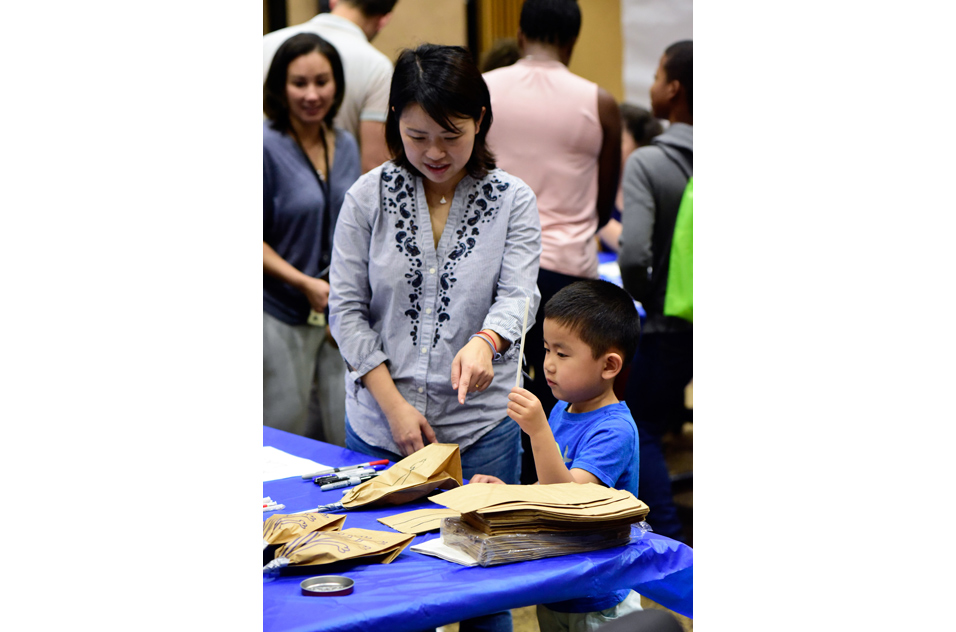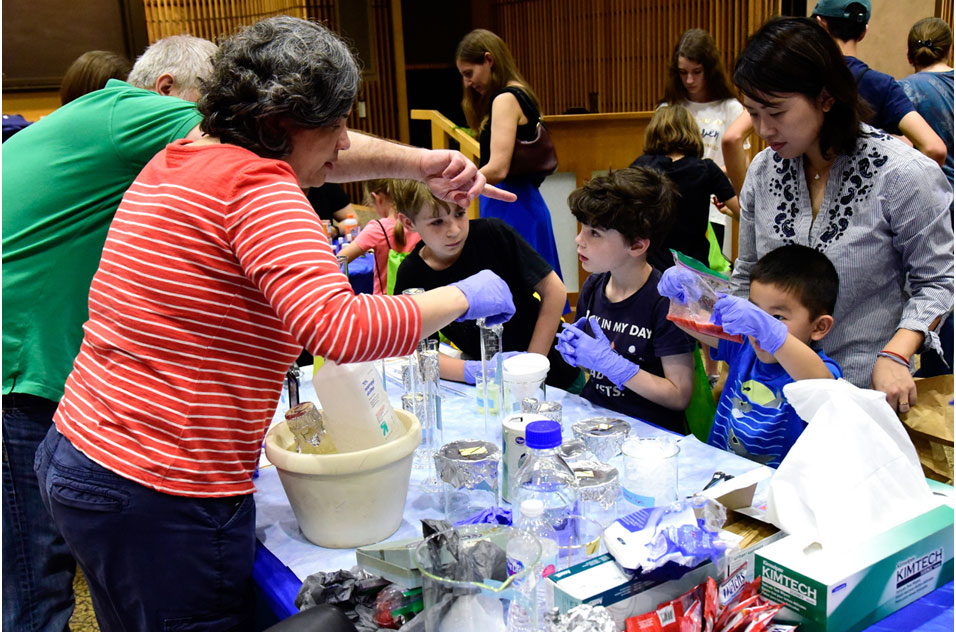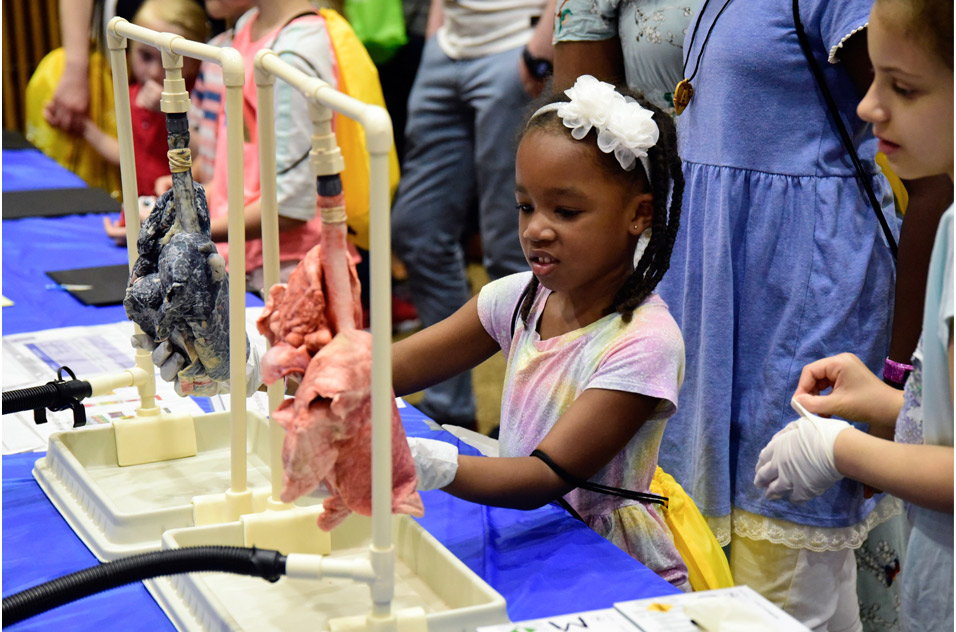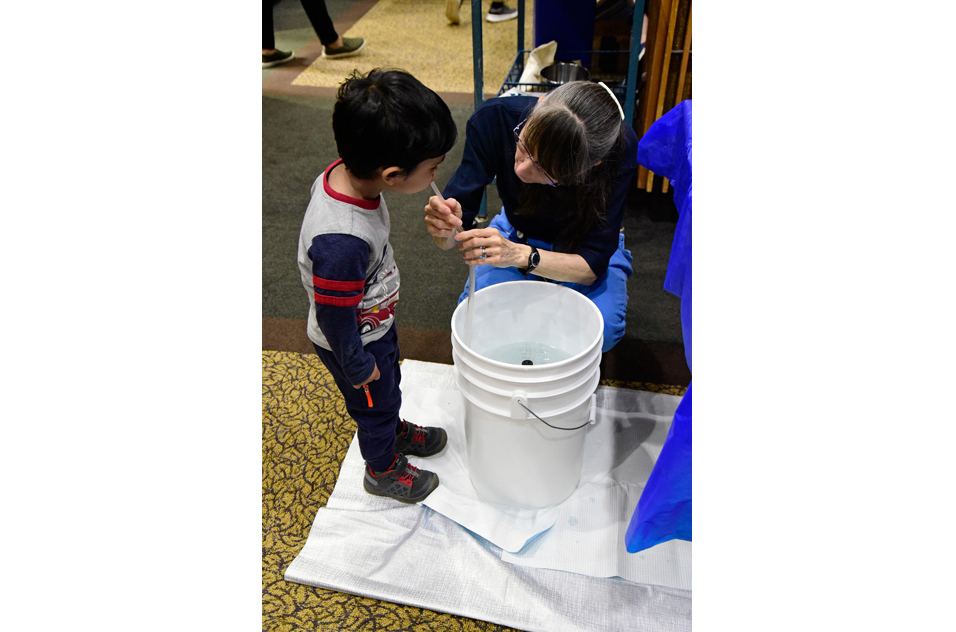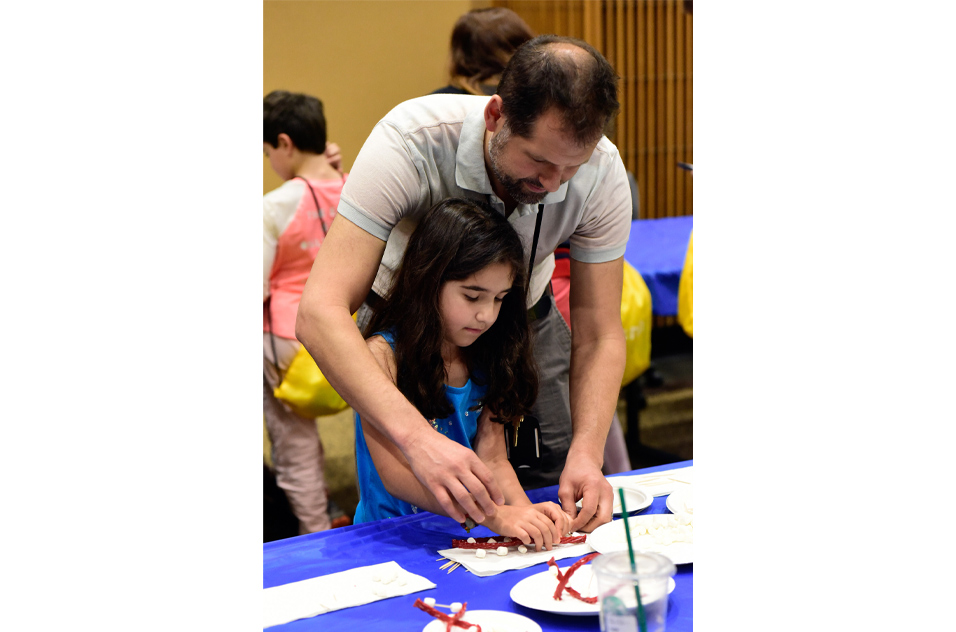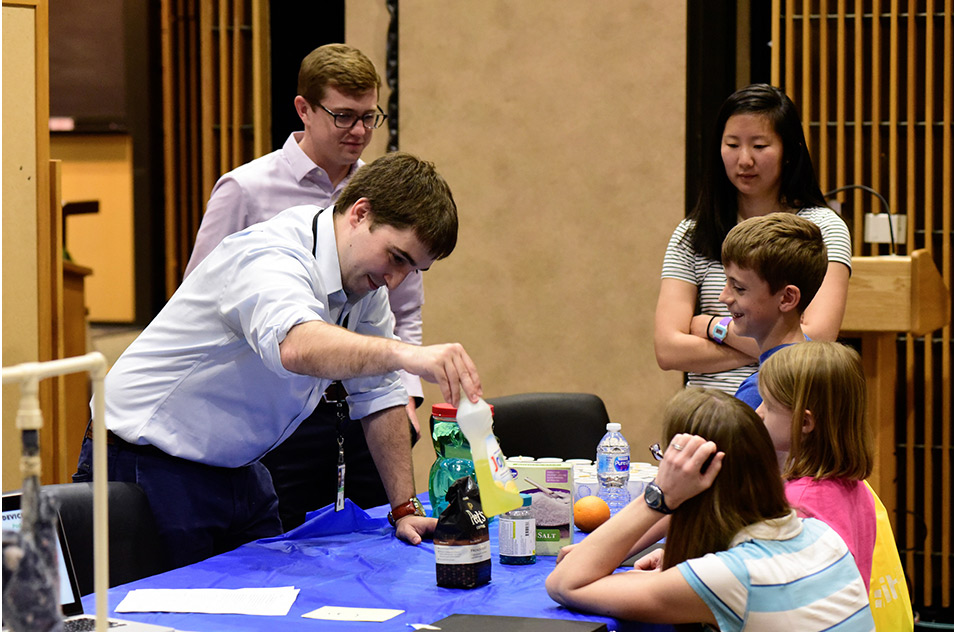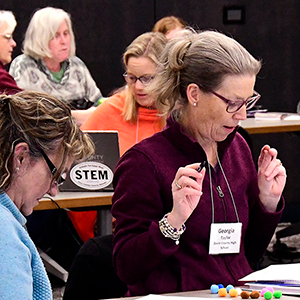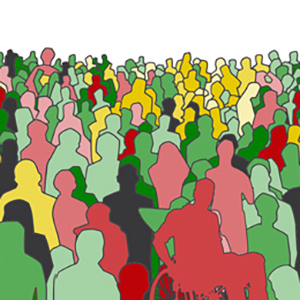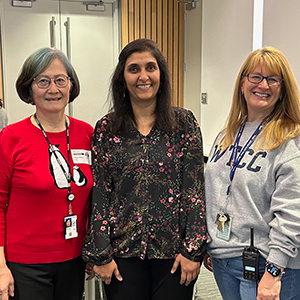On Bring Your Kids to Work Day April 25, NIEHS staff taught the children and grandchildren in attendance about scientific concepts that ranged from ocean acidification to genetics, and demonstrated the various professions available in the sciences. The event coincided with National Take Our Daughters and Sons to Work Day.
 A captivated child learned about ocean acidification. (Photo courtesy of Steve McCaw)
A captivated child learned about ocean acidification. (Photo courtesy of Steve McCaw)“It’s an institution-wide group effort, dependent on many NIEHS employees,” said Ed Kang, employee services manager in the Office of Management. “We offer a balance of education and fun for both parents and kids while simultaneously promoting awareness and educational outreach about environmental health sciences.”
Raising environmental awareness
Bring Your Kids to Work Day occurred during Earth Week (see related story). To reinforce lessons about caring for our Earth, NIEHS scientists and other staff members offered activities to help the kids understand human impact on the planet.
Huei-Chen Lee Ph.D., K-12 Science Education Program manager in the Office of Science Education and Diversity, taught children about ocean acidification using a dye sensitive to changes in pH. When the young researchers added lemon juice or soda to the mixture, they could watch the dye change color.
Lee asked the children what lemon juice and soda have in common. This was her springboard for discussing how these materials affect our personal health and the health of the ocean.
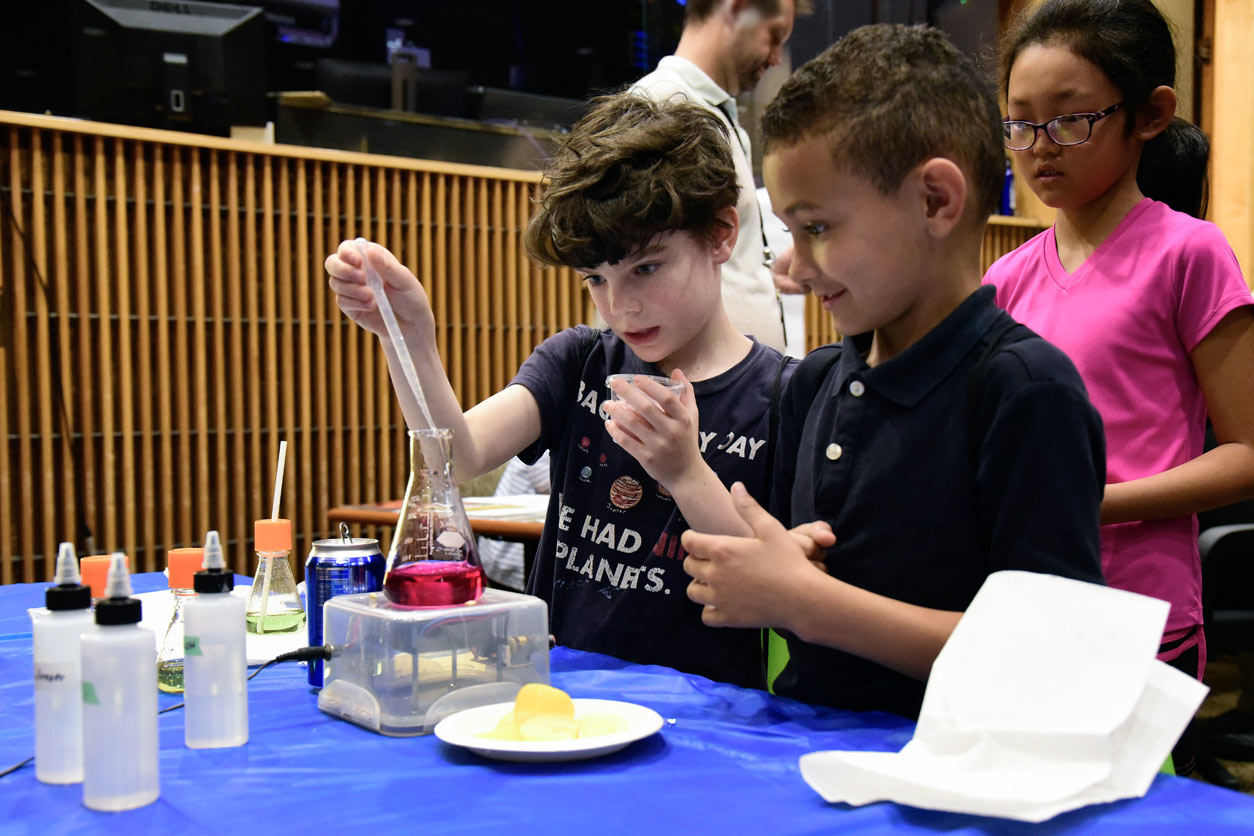 Excited children learned about scientific collaboration as they acidified their solution. (Photo courtesy of Steve McCaw)
Excited children learned about scientific collaboration as they acidified their solution. (Photo courtesy of Steve McCaw)“It was a wonderful opportunity to share an Earth Day activity during the Bring Your Child to Work Day event,” said Paul Johnson, manager of the Environmental Protection and Stewardship Programs. “This year’s Earth Day theme of Protect Our Species worked particularly well since protecting animals and other species is something children can relate to.”
Paul provided a collection of pictures for anyone to color and discussed protection of the featured species. The coloring table also provided an excellent spot for anyone needing to sit quietly during an otherwise busy day.
A scientific playground
“It’s not every day that you get to make arts and crafts that are also educational,” said Crystal Littlefield, from the Administrative Services and Analysis Branch. “I enjoy interacting with the kids and adults — both participants and volunteers — because we all seem to learn something new about the science and research done here. Not to mention all the funny things kids will say and share!”
 Parents and children together enjoyed creating genetic trait bracelets. (Photo courtesy of Steve McCaw)
Parents and children together enjoyed creating genetic trait bracelets. (Photo courtesy of Steve McCaw)One of the best ways to learn is through play, which was seen throughout the day. Geoff Mueller, Ph.D., staff scientist in the Nuclear Magnetic Resonance Imaging Group, brought out a collection of magnets. He used them to show how liquid nitrogen is used to turn on superconducting magnets. This demonstration inspired Joshua, 11 years old, to ask “What temperature does it need to be for the superconducting magnet to work?”
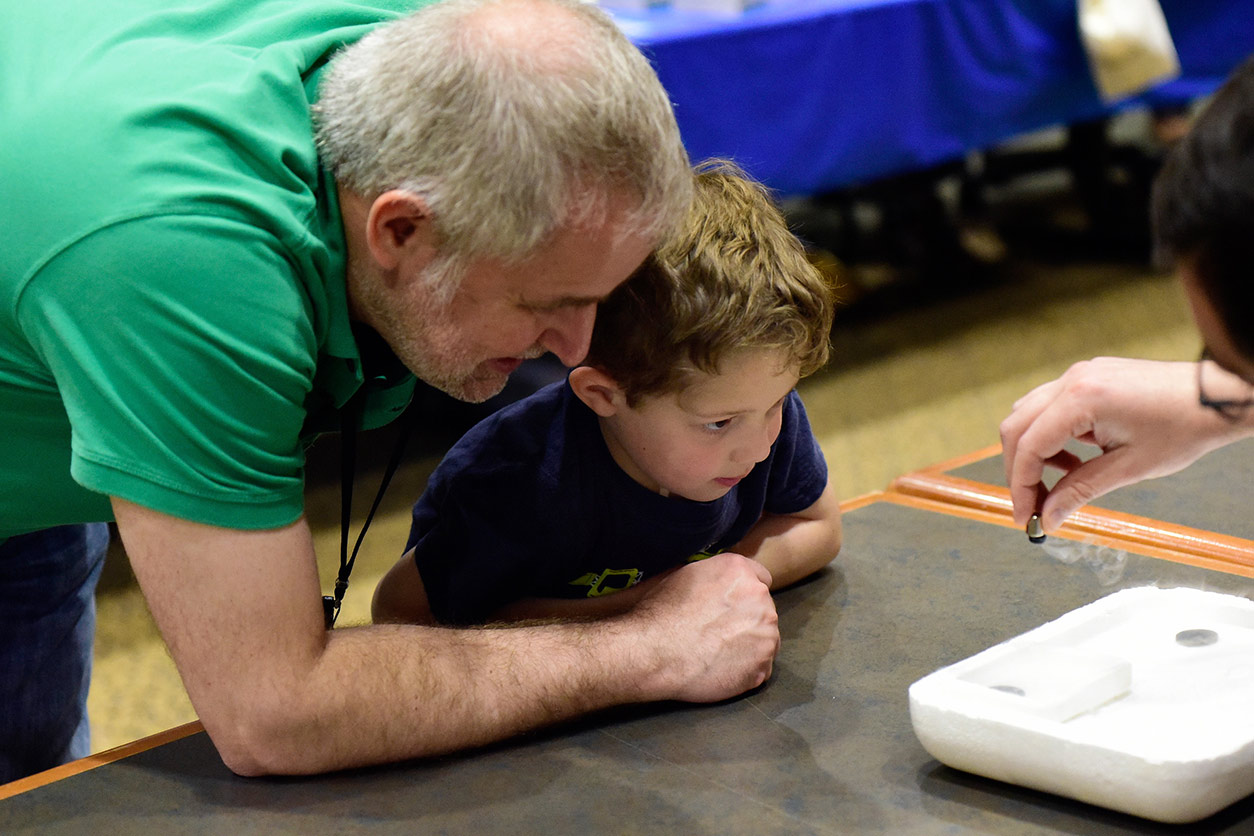 Mueller, not shown, demonstrated a superconducting magnet in liquid nitrogen while Johan, age 5, watched. (Photo courtesy of Steve McCaw)
Mueller, not shown, demonstrated a superconducting magnet in liquid nitrogen while Johan, age 5, watched. (Photo courtesy of Steve McCaw)A popular annual science experiment is the extraction of DNA from strawberries. This hands-on experiment smells delicious, involves squishing strawberries into pulp, and results in a sample that looks like snot. As Jaylen, 9 years old, said, “I love DNA extraction and have done it before!”
(Kirsten Hoff, Ph.D., is an Intramural Research and Training Award fellow in the NIEHS Genome Integrity and Structural Biology Laboratory.)





